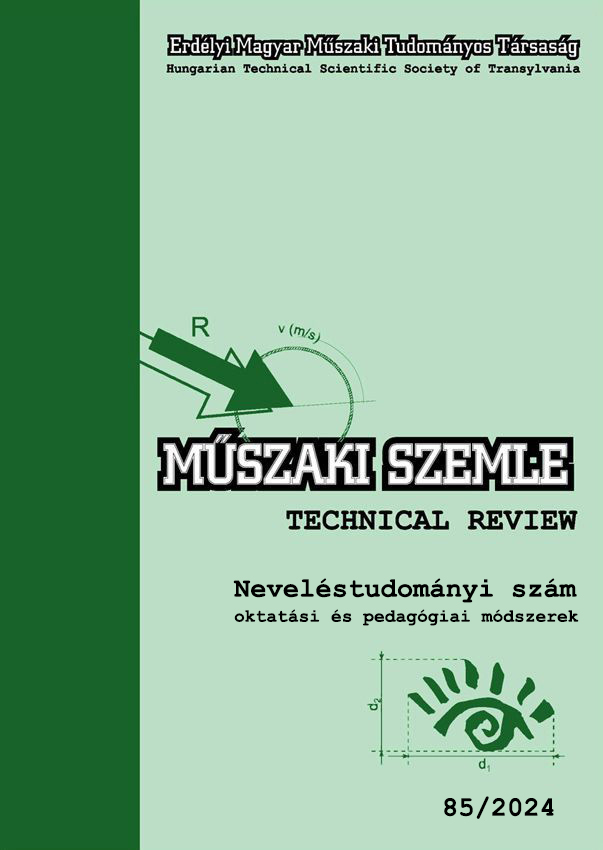Ivóvízként használt vízforrások vegyi összetétele Felső-Marosmente és Görgény-völgye helyiségeiben
Chemical composition of water sources used as drinking water in settlements situated in Defileul Mureșului Superior and Valea Gurghiului
Keywords:
lithium, drinking water, thyroid pathology, /, lítium, ivóvíz, pajzsmirigypatológiaAbstract
The quality, purity, and chemical composition of the water we consume are the basic public health requirements of our lives. Therefore, special attention must be paid to those settlements that do not have a central water supply system, and thus the inhabitants provide their water needs from their wells or other local sources. Based on our preliminary investigations, we found the Li concentration in drinking water to be relatively high in almost all settlements of the region and exceptionally high in the well waters of Săcalu de Pădure - a village that belongs to the Brâncovenești - which does not have a central water supply system. Since increased lithium intake can inhibit the function of the thyroid gland, it may play a role in the persistence of goiter and hypothyroidism which here exists to a certain degree, despite the universal table salt iodization. At the same time, it can be assumed that the composition of Săcalu de Pădure's waters may even be close to that of mineral waters, because its high Li, Ca, and Mg content could be useful in certain psychiatric disorders (mania, suicidal tendencies, possibly Alzheimer's disease, migraines and other conditions associated with increased excitement).
Kivonat
A fogyasztásra kerülő víz minősége, tisztasága, vegyi összetétele életünk alapvető közegészségügyi követelményei. Ezért különös figyelemmel kell kísérni azon településeket, amelyeknek nincsen központi vizellátórendszerük, s így a lakosok a saját kútjukból, vagy más helyi forrásból biztosítják vízszükségletüket. Előzetes vizsgálataink alapján a régió majdnem minden településén viszonylag magasnak találtuk az ivóvizek Li-koncentrációját és kiugróan magasnak a Marosvécs községhez tartozó, központi vízellátó rendszerrel nem rendelkező Erdőszakál kútvizeiben. Mivel a fokozott lítium-bevitel gátolhatja a pajzsmirigy működését, felmerül szerepe a golyva és a hypothyreosis bizonyos fokú perzisztenciájában, amely itt az általános konyhasó-jódozás mellett is fennáll. Ugyanakkor feltételezhető, hogy az erdőszakáli vizek összetétele akár az ásványvízekéhez is közel állhat, ugyanis a magas Li-, Ca- és Mg-tartalom egyes pszichiátriai kórképek (mánia, öngyilkossági hajlam, esetleg Alzheimer-kór, migrén és egyéb, fokozott izgatottsággal járó állapotok) esetén lenne hasznosítható.
References
Borszéki Béla (szerk.): Ásványvizek és gyógyvizek. Mezőgazdasági Kiadó. Budapest, 1979
Kun I.Z., Zs. Szántó, J. Balázs, A. Năsălean, C. Gliga: Detection of iodine deficiency disorders (goiter and hypothyroidism) in school-children living in endemic mountainous regions, after the implementation of universal alimentary salt-iodization. In: Hot Topics in Endocrine and Endocrine-Related Diseases, Chapter 4. Fedele M. (ed.) 2013, pag. 101-128, e-book, Publisher Intech, ISBN: 978-953-51-1080-4, http://dx. doi. org / 10.5772/54188
Szántó Zs., Kun I.Z., Pașcanu I., Kolcsár M, Réti Zs.: Klinikai endocrinologia, Ed.Univ.Press, Târgu-Mureș, 2015, 46-49, 51-64, 68, 71-73, 76-80, 81-88, 89-94
Straub János: Erdélyi gyógyvizek (ásványvizek) kémiai összetétele különös tekintettel a ritkább alkatrészekre és ezek biokémiai jelentőségére, 1940, 39-40
Muhammad Adeel, Muhammad Zain, Noman Shakoor, Muhammad Arslan Ahmad, Imran Azeem, Muhammad Abdullah Aziz, Robert Xavier Supe Tulcan, Akshit Rathore, Muhammad Tahir, Robert Horton, Ming Xu, and Rui Yuku: Global navigation of Lithium in water bodies and emerging human health crisis Clean Water, published in partnership with King Fahd University of Petroleum and Minerals, 2023, 6:33.
Péter Dobosy, Ádám Illés, Anett Endrédi, Gyula Záray: Lithium concentration in tap water, bottled mineral water, and Danube River water in Hungary, Scientific reports, 2023, 13:12543
Noman Shakoor, Muhammad Adeel, Muhammad Arslan Ahmad, Muhammad Zain, Usman Waheed, Rana Arsalan Javaid, Fasih Ullah Haider, Imran Azeem, Pingfan Zhou, Yuanbo Li, Ghulam Jilani, Ming Xu, Jorg Rinklebe, Yukui Rui: Reimagining safe lithium applications in the living environment and its impacts on human, animal, and plant system, Environmental Science and Ecotechnology, 15, 2023, 100252
WHO/HSE/WSH/10.01/14, Selenium in Drinking water.
Török, A.I.; Moldovan, A.; Levei, E.A.; Cadar, O.; Tănăselia, C.; Moldovan, O.T. Assessment of Lithium, Macro- and Microelements in Water, Soil and Plant Samples from Karst Areas in Romania. Materials 2021, 14, 4002. https://doi.org/10.3390/ma14144002
Ana Moldovan, Maria-Alexandra Hoaghia, Eniko Kovacs, Ionut, Cornel Mirea, Marius Kenesz, Răzvan Adrian Arghir, Alexandru Petculescu, Erika Andrea Levei, and Oana Teodora Moldovan. Quality and Health Risk Assessment Associated with Water Consumption - A Case Study on Karstic Springs. Water 2020, 12(12), 3510; https://doi.org/10.3390/w12123510
Karin Broberg, Gabriela Concha, Karin Engström, Magnus Lindvall, Margareta Grandér and Marie Vahter: Lithium in Drinking Water and Thyroid Function, Research, Environmental Health Perspectives, volume 119, number 6, June 2011, 827-830
WHO, A global overview of national regulation and standards for drinking water quality, second edition, 2021, ISBN 978-92-40-002364-2, electronic version
Allan H. Young: More good news about the magic ion: lithium may prevent dementia, The British Journal of Psychiatry, 2011, 198, 336–337.
Yacobi S, Ornoy A.: Is lithium a real teratogen? What can we conclude from the prospective versus retrospective studies? A review., Isr J Psychiatry Relat Sci 2008, 45 (2), 95–106.





